An increased awareness of the effects of gravity can help you figure out which muscles to use and which to release in order to move more deeply and more safely into a pose.

When my children were very young and seated in a highchair, they would deliberately drop pieces of food—one by one over the edge of the tray, each time delightedly watching them fall to the floor. By the time my third child reached this stage, I had changed my perspective. Instead of being annoyed, I told myself that she was just “experimenting with gravity.” That always made me smile.
When you practice asana, you are constantly experimenting or dancing with the force of gravity and its effects on a pose. If you are to understand how to practice, and certainly how to teach, you must be aware of how gravity “chooses” which muscles are working, and which are not, in each asana, and why this is so. This understanding is what I call movement literacy, and it is the guiding principle of my online and in-person course on experiential anatomy.
Movement literacy is based on the understanding that the body is an orchestra and movements are the music it creates. When you can see, feel, and understand the specifics of the body’s movements, not only do you become a better practitioner, but you now have the tools to help your students practice more safely and even potentially to help them eliminate pain when they struggle in an asana.
Here is an example: Both Supta Padangusthasana (Reclining Hand-to-Big-Toe Pose) and Uttanasana (Standing Forward Bend) are forward bends. Both poses are practiced by flexing the hip joints. But there is a big difference in which muscles are creating each asana. In Supta Padangusthasana, you begin by lying supine on your mat. To practice the pose, you exhale as you flex your hip joint, bringing your thigh toward your trunk. Your leg comes straight up, moving against the force of gravity the whole way. Finally, catch your big toe or hold on to your outer ankle or lower leg, depending on your flexibility.
この記事は Yoga Journal の January - February 2019 版に掲載されています。
7 日間の Magzter GOLD 無料トライアルを開始して、何千もの厳選されたプレミアム ストーリー、9,000 以上の雑誌や新聞にアクセスしてください。
すでに購読者です ? サインイン
この記事は Yoga Journal の January - February 2019 版に掲載されています。
7 日間の Magzter GOLD 無料トライアルを開始して、何千もの厳選されたプレミアム ストーリー、9,000 以上の雑誌や新聞にアクセスしてください。
すでに購読者です? サインイン
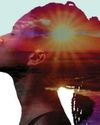
Learning to Hear the Voice of Self-Care
How to discern what really matters.
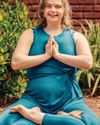
Inclusive Yoga for All
A Down syndrome diagnosis set this family on a path to make yoga accessible to everyone.

For the Joy of Practice
Doing yoga without attachment to the outcome can bring unexpected gifts.
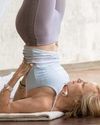
Be Kind to Your Spine
Your vertebral column is a series of complex, interconnecting parts that support your every movement. Here's how to keep it safe.

A Skeptic of Chakra Balancing
The experience helped me make peace with things that can't be explained.

Are We Having Fun Yet?
Bring play back into your practice with three styles of yoga that can get you out of your head and bring a smile to your face.
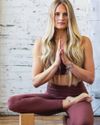
12 Ways to Use Blocks You've Probably Never Tried Before
The beauty of blocks? They not only meet you where you are in your practice, they take you beyond where you ever thought you could go.

THE SCIENCE OF AWE
THOSE MOMENTS IN LIFE THAT STOP YOU IN YOUR TRACKS IN ASTONISHMENT? RESEARCH SAYS EXPERIENCING MORE OF THEM CAN CHANGE YOUR LIFE.
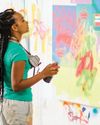
What Your Doshas Say About Your Dharma
Ayurveda can explain so much more than what's out of balance.
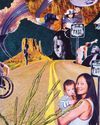
The Future of Yoga
Yoga has been evolving for thousands of yearsfrom a mind-and-body spiritual practice to a billion-dollar "lifestyle" practice. What's next? We asked futurists, teachers, and thinkers what to expect in the next decade and beyond.